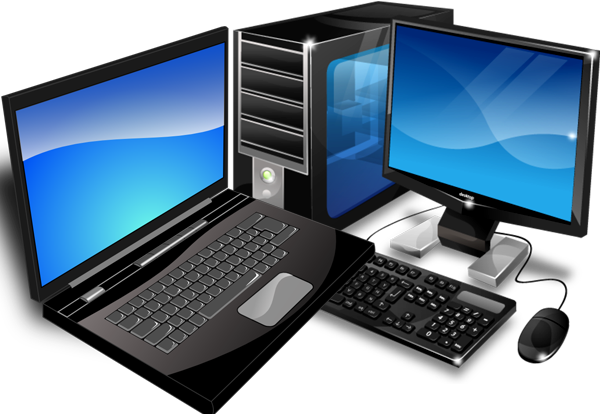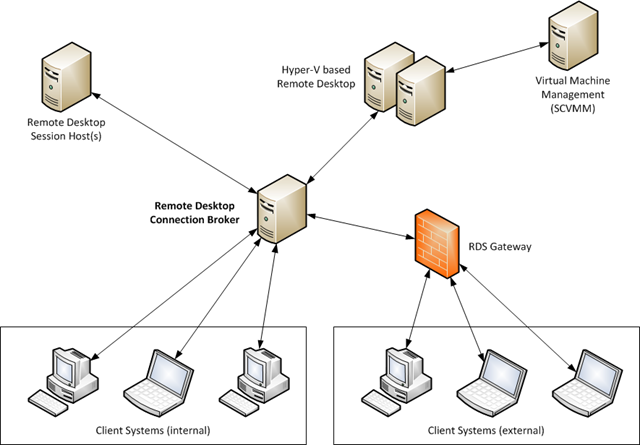Subject Matter Expert with Remote Desktop Services and Windows Virtual Desktop. Ryan is the author of the Microsoft Ebook 'Quickstart Guide to Windows Virtual Desktop' and the Ebook 'A introduction to MSIX app attach' View all posts by Ryan Mangan. Remote Desktop Services (RDS) is an umbrella term for features of Microsoft Windows Server that allow users to remotely access graphical desktops and Windows applications. If you use Remote Desktop Services (RDS) to provide shared computers to users in your organization, you can install Microsoft 365 Apps on those computers. But, you have to use the Office Deployment Tool and enable shared computer activation to do the installation. The following are two common RDS scenarios: Install Microsoft 365 Apps on an RDS.
- Remote Desktop Services Rds Deployment Cost
- Rds Servers
- Windows Remote Desktop Services Rds
- Remote Desktop Gateway Windows 10
- Rds Remote Desktop Services Manager
Remote Desktop Services Session Hosts and single-session client operating systems can take advantage of the physical or virtual GPUs presented to the operating system in many ways, including the Azure GPU optimized virtual machine sizes, GPUs available to the physical RDSH server, and GPUs presented to the VMs by supported hypervisors.
Esther completed her MSc in Computer Science in 1997 at the Universiteit Twente, and has been consulting different customers in numerous roles and disciplines, building a broad knowledge base of IT solutions from databases, servers, networks, Server Based Computing (SBC), Virtual Desktop Infrastructure (VDI) and DevOps automation products.
She is a Microsoft MVP for Enterprise Mobility / Remote Desktop Services and a Parallels VIPP.
To further grow her leadership skills, she has taken on the role of Area Director for Toastmasters, and shares her knowledge by regularly speaks at tech conferences.
She also has the following certifications:
* RCP (RES Software Certified Professional)
* CCE-V (Citrix Certified Expert – Virtualization)
* CCP-V (Citrix Certified Professional – Virtualization)
* CCP-N (Citrix Certified Professional -Networking)
Her specialties are: Technical presentations | Application Delivery Controllers (Citrix ADC) | VDI (Citrix VAD, Microsoft WVD) | Presentation Virtualization (Citrix VAD, Microsoft RDS) | UEM (Ivanti Workspace) | DevOps/Scripting (PowerShell, REST APIs, JSON, Ivanti Automation)
-->Applies to: Windows Server (Semi-Annual Channel), Windows Server 2019, Windows Server 2016
Remote Desktop Services Rds Deployment Cost
This article describes the roles within a Remote Desktop Services environment.
Remote Desktop Session Host
The Remote Desktop Session Host (RD Session Host) holds the session-based apps and desktops you share with users. Users get to these desktops and apps through one of the Remote Desktop clients that run on Windows, MacOS, iOS, and Android. Users can also connect through a supported browser by using the web client.
You can organize desktops and apps into one or more RD Session Host servers, called 'collections.' You can customize these collections for specific groups of users within each tenant. For example, you can create a collection where a specific user group can access specific apps, but anyone outside of the group you designated won't be able to access those apps.
For small deployments, you can install applications directly onto the RD Session Host servers. For larger deployments, we recommend building a base image and provisioning virtual machines from that image.
You can expand collections by adding RD Session Host server virtual machines to a collection farm with each RDSH virtual machine within a collection assigned to same availability set. This provides higher collection availability and increases scale to support more users or resource-heavy applications.
In most cases, multiple users share the same RD Session Host server, which most efficiently utilizes Azure resources for a desktop hosting solution. In this configuration, users must sign in to collections with non-administrative accounts. You can also give some users full administrative access to their remote desktop by creating personal session desktop collections.


You can customize desktops even more by creating and uploading a virtual hard disk with the Windows Server OS that you can use as a template for creating new RD Session Host virtual machines.
For more information, see the following articles:
Remote Desktop Connection Broker
Remote Desktop Connection Broker (RD Connection Broker) manages incoming remote desktop connections to RD Session Host server farms. RD Connection Broker handles connections to both collections of full desktops and collections of remote apps. RD Connection Broker can balance the load across the collection's servers when making new connections. If RD Connection Broker is enabled, using DNS round robin to RD Session Hosts for balacing servers is not supported. If a session disconnects, RD Connection Broker will reconnect the user to the correct RD Session Host server and their interrupted session, which still exists in the RD Session Host farm.
You'll need to install matching digital certificates on both the RD Connection Broker server and the client to support single sign-on and application publishing. When developing or testing a network, you can use a self-generated and self-signed certificate. However, released services require a digital certificate from a trusted certification authority. The name you give the certificate must be the same as the internal Fully Qualified Domain Name (FQDN) of the RD Connection Broker virtual machine.
You can install the Windows Server 2016 RD Connection Broker on the same virtual machine as AD DS to reduce cost. If you need to scale out to more users, you can also add additional RD Connection Broker virtual machines in the same availability set to create an RD Connection Broker cluster.
Rds Servers
Before you can create an RD Connection Broker cluster, you must either deploy an Azure SQL Database in the tenant's environment or create an SQL Server AlwaysOn Availability Group.
For more information, see the following articles:
- SQL database in Desktop hosting service.
Remote Desktop Gateway
Remote Desktop Gateway (RD Gateway) grants users on public networks access to Windows desktops and applications hosted in Microsoft Azure's cloud services.
The RD Gateway component uses Secure Sockets Layer (SSL) to encrypt the communications channel between clients and the server. The RD Gateway virtual machine must be accessible through a public IP address that allows inbound TCP connections to port 443 and inbound UDP connections to port 3391. This lets users connect through the internet using the HTTPS communications transport protocol and the UDP protocol, respectively.
The digital certificates installed on the server and client have to match for this to work. When you're developing or testing a network, you can use a self-generated and self-signed certificate. However, a released service requires a certificate from a trusted certification authority. The name of the certificate must match the FQDN used to access RD Gateway, whether the FQDN is the public IP address' externally facing DNS name or the CNAME DNS record pointing to the public IP address.
For tenants with fewer users, the RD Web Access and RD Gateway roles can be combined on a single virtual machine to reduce cost. You can also add more RD Gateway virtual machines to an RD Gateway farm to increase service availability and scale out to more users. Virtual machines in larger RD Gateway farms should be configured in a load-balanced set. IP affinity isn't required when you're using RD Gateway on a Windows Server 2016 virtual machine, but it is when you're running it on a Windows Server 2012 R2 virtual machine.
Windows Remote Desktop Services Rds
For more information, see the following articles:
Remote Desktop Gateway Windows 10
Remote Desktop Web Access
Remote Desktop Web Access (RD Web Access) lets users access desktops and applications through a web portal and launches them through the device's native Microsoft Remote Desktop client application. You can use the web portal to publish Windows desktops and applications to Windows and non-Windows client devices, and you can also selectively publish desktops or apps to specific users or groups.
RD Web Access needs Internet Information Services (IIS) to work properly. A Hypertext Transfer Protocol Secure (HTTPS) connection provides an encrypted communications channel between the clients and the RD Web server. The RD Web Access virtual machine must be accessible through a public IP address that allows inbound TCP connections to port 443 to allow the tenant's users to connect from the internet using the HTTPS communications transport protocol.
Matching digital certificates must be installed on the server and clients. For development and testing purposes, this can be a self-generated and self-signed certificate. For a released service, the digital certificate must be obtained from a trusted certification authority. The name of the certificate must match the Fully Qualified Domain Name (FQDN) used to access RD Web Access. Possible FQDNs include the externally facing DNS name for the public IP address and the CNAME DNS record pointing to the public IP address.
For tenants with fewer users, you can reduce costs by combining the RD Web Access and Remote Desktop Gateway workloads into a single virtual machine. You can also add additional RD Web virtual machines to an RD Web Access farm to increase service availability and scale out to more users. In an RD Web Access farm with multiple virtual machines, you'll have to configure the virtual machines in a load-balanced set.

For more information about how to configure RD Web Access, see the following articles:
Remote Desktop Licensing
Activated Remote Desktop Licensing (RD Licensing) servers let users connect to the RD Session Host servers hosting the tenant's desktops and apps. Tenant environments usually come with the RD Licensing server already installed, but for hosted environments you'll have to configure the server in per-user mode.
The service provider needs enough RDS Subscriber Access Licenses (SALs) to cover all authorized unique (not concurrent) users that sign in to the service each month. Service providers can purchase Microsoft Azure Infrastructure Services directly, and can purchase SALs through the Microsoft Service Provider Licensing Agreement (SPLA) program. Customers looking for a hosted desktop solution must purchase the complete hosted solution (Azure and RDS) from the service provider.
Small tenants can reduce costs by combining the file server and RD Licensing components onto a single virtual machine. To provide higher service availability, tenants can deploy two RD License server virtual machines in the same availability set. All RD servers in the tenant's environment are associated with both RD License servers to keep users able to connect to new sessions even if one of the servers goes down.
Rds Remote Desktop Services Manager
For more information, see the following articles:
